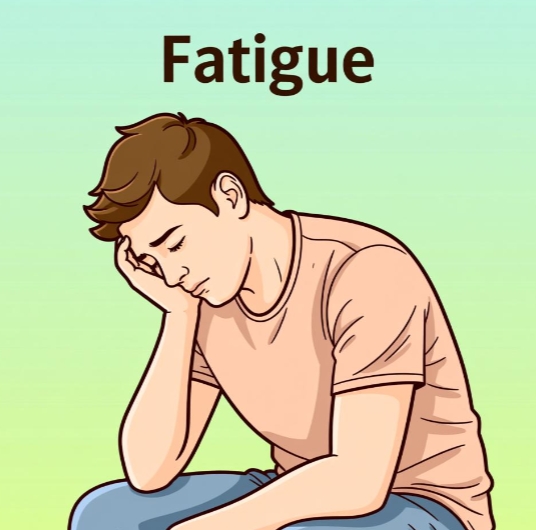Primary biliary cholangitis (PBC) is a chronic autoimmune cholestatic liver disease that selectively destroys intrahepatic small bile ducts. Destruction leads to bile retention, hepatocyte damage, and progressive fibrosis. Onset is insidious; many patients are diagnosed while still asymptomatic through routine elevation of alkaline phosphatase. Recognising the evolving clinical picture allows early therapy and monitoring of complications.
- Early-stage signals
Fatigue: the most frequent first complaint, unrelated to disease severity, often fluctuating and out of proportion to liver biochemistry.
Pruritus: initially nocturnal, localized to palms or soles, later generalized; can be intermittent or persistent, sometimes worsened by heat, stress, or pregnancy.
Dry eyes and dry mouth: part of associated Sjögren-like exocrine involvement, causing gritty sensation and difficulty swallowing dry foods.
Right upper quadrant discomfort: dull, vague heaviness rather than sharp pain, from liver capsule stretching. - Cholestatic progression
Hyperpigmentation: patchy bronze discoloration on trunk, limbs, or scars due to melanin deposition in cholestasis.
Xanthelasma and tendon xanthomas: yellowish lipid deposits around eyelids, elbows, or hands from altered cholesterol and bile acid metabolism.
Steatorrhea: bulky, pale, greasy stools with increased frequency; results from reduced bile acid pool and fat malabsorption.
Weight loss: gradual, often unnoticed, related to fat malabsorption and anorexia. - Metabolic bone and blood effects
Bone pain or fragility fractures: chronic cholestasis reduces vitamin D absorption and impairs osteoblast activity, leading to osteopenia/osteoporosis.
Easy bruising: from vitamin K malabsorption and subsequent coagulopathy.
Anemia or mild icterus: may appear once advanced cholestasis impairs erythropoiesis and bilirubin excretion. - Decompensated-stage features
Jaundice: progressive yellowing of sclera and skin, indicating rising conjugated bilirubin.
Ascites and lower limb edema: portal hypertension and hypoalbuminemia.
Spider nevi, palmar erythema, splenomegaly: signs of cirrhotic transformation.
Hepatic encephalopathy: sleep inversion, confusion, or asterixis when liver failure supervenes. - Associated extrahepatic conditions
Thyroid dysfunction: hypothyroidism or Hashimoto thyroiditis.
Raynaud phenomenon and arthralgias: overlapping autoimmune features.
Celiac disease or inflammatory bowel disease: warrant screening when suggestive symptoms arise.
Red-flag combinations demanding immediate review
Rapid deepening of jaundice, new ascites with fever, upper gastrointestinal bleeding, or sudden altered mental state.
Summary table
| Symptom | Typical timing | Practical patient action |
|---|---|---|
| Fatigue, pruritus | Early | Record severity diary; discuss bile acid sequestrants |
| Dry eyes/mouth | Any stage | Artificial tears, sugar-free lozenges |
| Xanthelasma | Cholestatic years | Lipid control, consider statin if indicated |
| Bone pain | Progressive | DEXA scan, weight-bearing exercise, calcium/vitamin D |
| Jaundice, ascites | Decompensated | Urgent liver clinic referral, consider transplant work-up |
